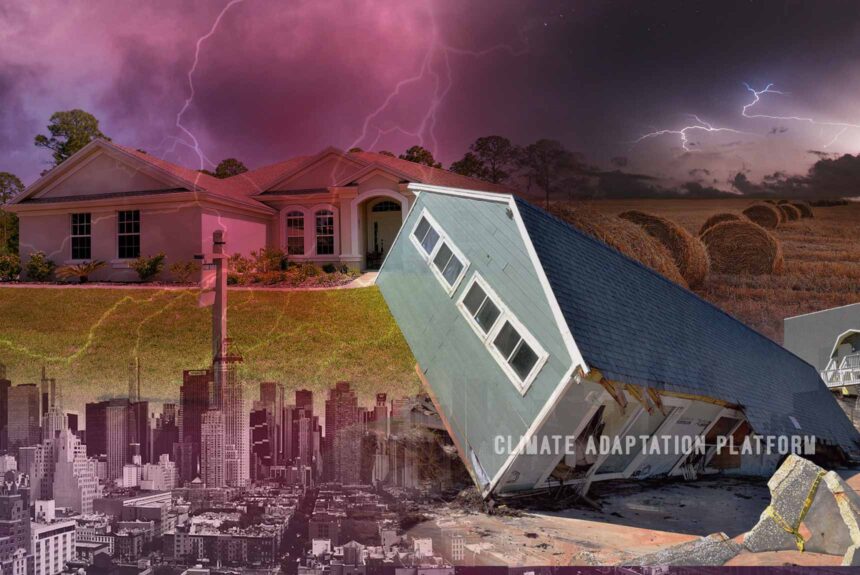Flood risks are increasing in the United States, but despite the growing threat, the current flood risk mapping is still based on historical data.
The study, Inequitable patterns of US flood risk in the Anthropocene, published in Nature on January 2022, says that the risk of floods will increase by 26% by 2050 due to climate change with a projected loss amounting to US$40.6 billion (US$37.8–42.7 billion) by 2050 under the RCP4.5 scenario.
Data shows that the country already suffers annual losses of US$ 32.1 billion (US$30.5–33.8 billion) in 2020’s climate, and these losses are borne disproportionately by poorer communities with a larger White population.
However, as flood risk increases in the future, Black communities will be significantly more impacted by it, especially those living on the Atlantic or Eastern coasts and Gulf coasts. Future population growth will also increase the impacts of flooding by four times greater than due to climate change. Hence, adaptation to floods and climate change mitigation should be a priority to avoid the worst impacts.
The study identifies the counties across the United States that are hotspots for annual flood losses. While the FEMA Special Flood Hazard Area (SFHA) shows the flood risk zones in the country, and those properties within it are mandated to purchase flood insurance for those with a federally backed mortgage.
Those properties outside of FEMA SFHA have a misconception that they are risk-free from floods when in reality, the hazard maps have not been updated, which means that they are facing risk from unmapped pluvial or even fluvial floods that are outside of the 100-year flood zone where lower-frequency floods can still occur. Hence, a need to update the hazard maps to reflect the current and future flood risks.
Aside from climate change in the following decades, population growth and the development that goes with it are also increasing risk exposures.
“The average annual exposure (AAE) of the current US population to flooding is 3.63 million (1.18%). Climate change is projected to increase the AAE of present populations to 4.31 million (1.41%), an increase of 18.6%. Meanwhile, population growth alone in a static climate (that is, no future changes in flood hazard) would result in a 72.6% increase to an AAE of 6.27 million by 2050. This corresponds to 1.60% of 2050’s projected population, indicating that future development is projected to disproportionately intensify in hazardous areas (given that the present-day proportion is 1.18%). Without policies to direct new development into safer areas, the contribution of population growth to future US flood risk exceeds that of climatic changes. Population growth alone accounts for 74.7% of the increase in AAE to 2050, while climate change represents 19.1% of the change.”
The study indicates that present and future, direct and indirect, and tangible and intangible threats from floods demonstrate the lack of flood resilience in the United States, regardless of what the future holds in terms of climate and demographic change. The immediate impacts of climate change would also make mitigation efforts like decarbonisation futile. Instead, the focus should shift to implementing adaptation measures in areas where developments are taking place now and in the future.
Unaccounted flood risk impacts on US real estate market
Another study published in Nature shows that when flood risks are accounted for, it could devalue house prices in the United States between US$121–US$237 billion. The study examines the potential cost of anticipated flood risks in the US housing market.
Researchers from Environmental Defense Fund, First Street Foundation, Resources for the Future, the Federal Reserve, and several academic institutions author the study. It finds that aside from the impact of floods in the real estate markets, it will also affect communities, particularly low-income owners and municipalities, due to their reliance on property taxes for revenue.
Low-income families are most vulnerable to the devaluation of their houses since it is their most valuable asset. The study estimates that low-income households could lose up to 10% of their house market value.
The study is the first to account for the cost of flooding risk to properties and how the overvaluation of houses will affect the local housing markets and municipalities.
But even with the flooding risk to properties, developers continue to build more houses due to the higher house prices they fetch, particularly in coastal areas, feeding a housing bubble that could potentially burst when flooding hits.
These private insurance premiums should start reflecting the cost of damages from these anticipated floods to prevent a costly housing bubble collapse.
Interestingly, some of these homeowners are unaware that their properties are over-evaluated. The government has a crucial role not only in communicating the flood risk but also in managing them through adaptation responses, including updated flood maps, broadened flood risk disclosure laws, and increasing investment in flood risk reduction, says Dr Jesse Gourevitch, a postdoctoral fellow at Environmental Defense Fund and lead author of the study.
Sources:
Wing, O.E.J., Lehman, W., Bates, P.D. et al. Inequitable patterns of US flood risk in the Anthropocene. Nat. Clim. Chang. 12, 156–162 (2022). https://doi.org/10.1038/s41558-021-01265-6
Gourevitch, J.D., Kousky, C., Liao, Y.(. et al. Unpriced climate risk and the potential consequences of overvaluation in US housing markets. Nat. Clim. Chang. 13, 250–257 (2023). https://doi.org/10.1038/s41558-023-01594-8



Leave a Reply